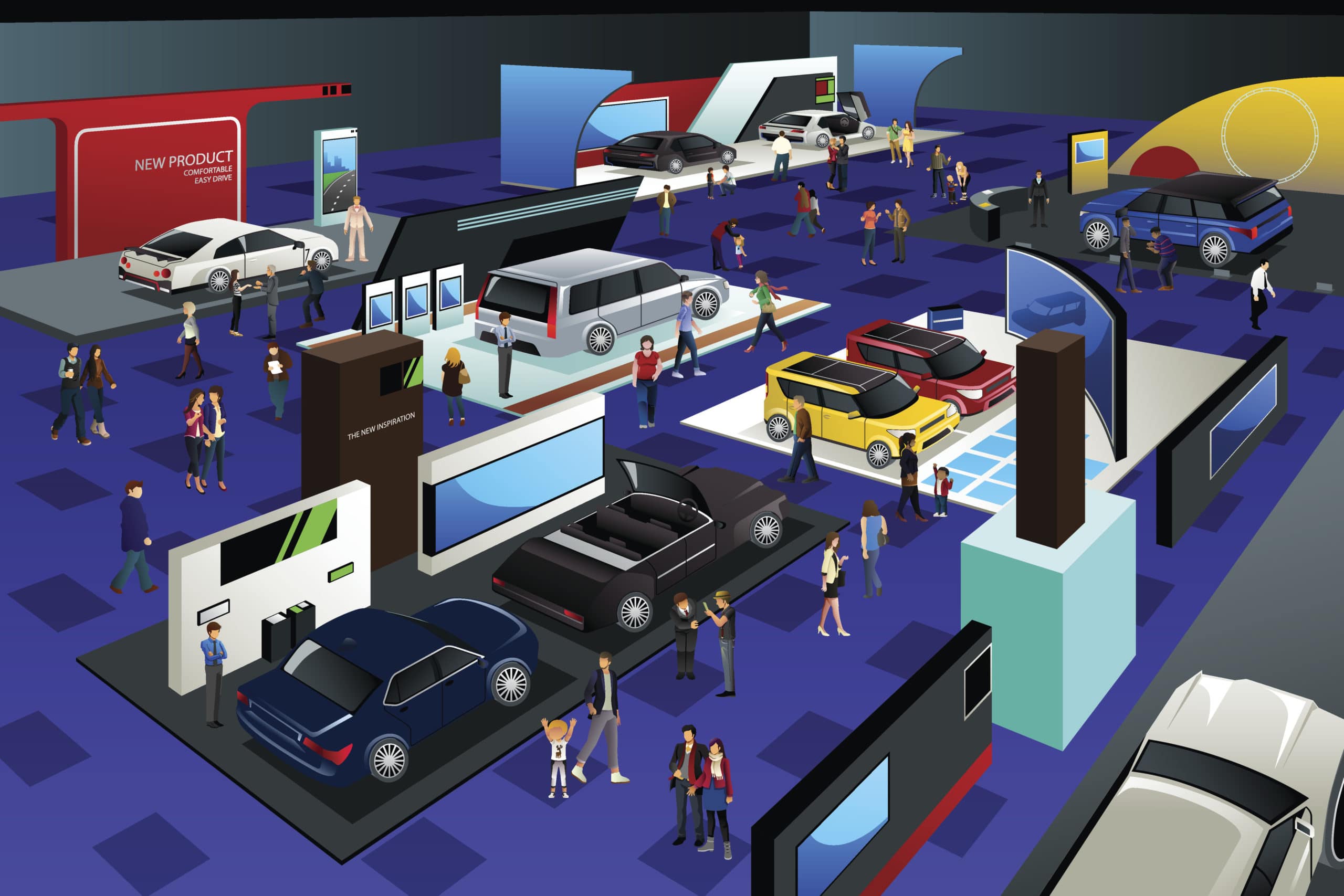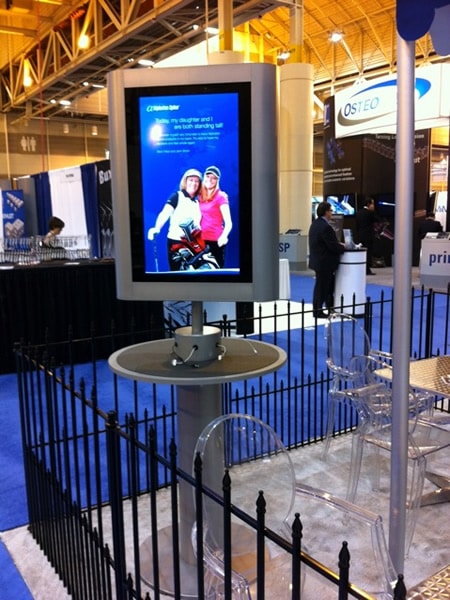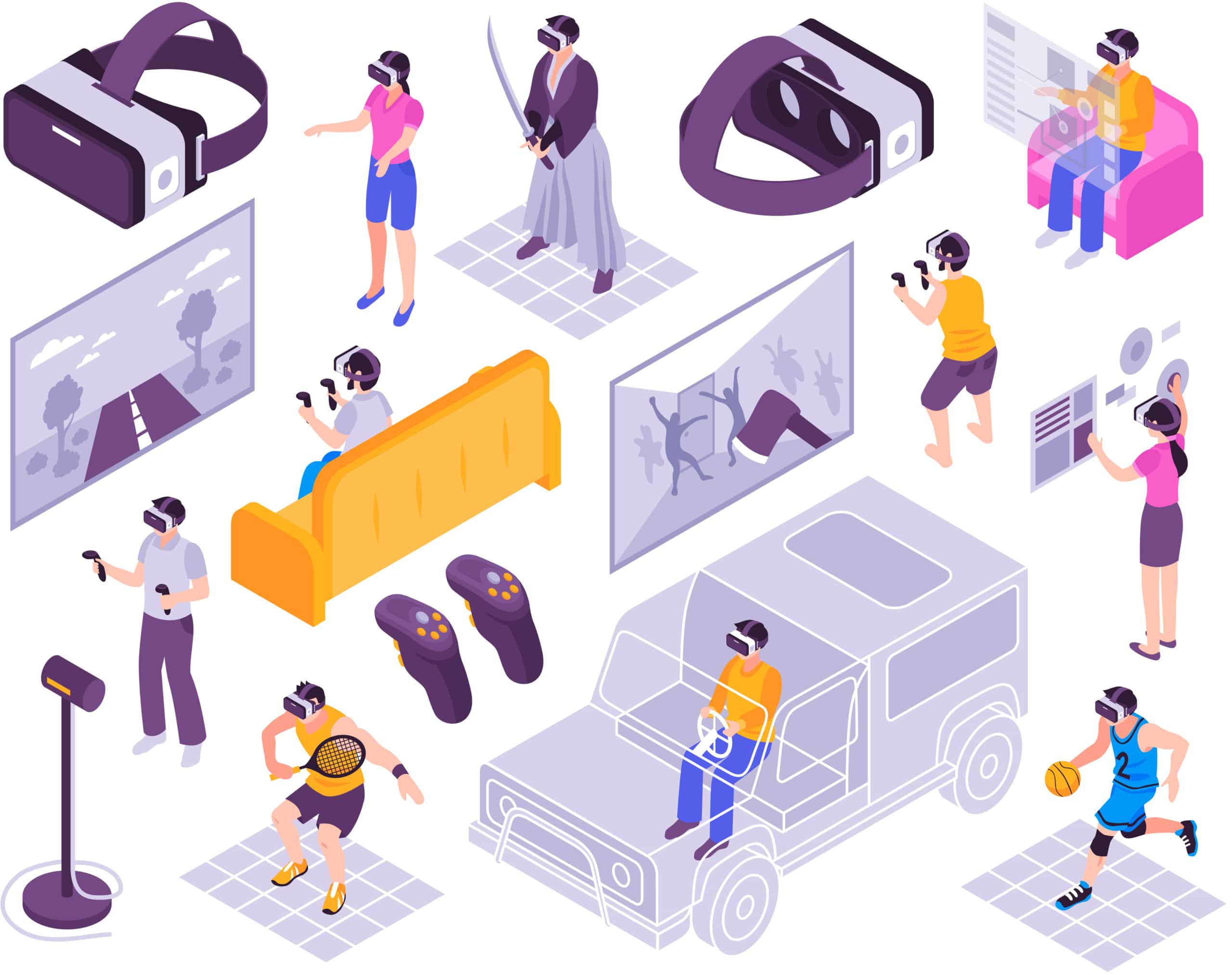Trade Show Technology and Using it Effectively On The Show Floor
When we first started this business, the concept of "trade show technology" or using technology on the trade show floor was rarely mentioned.
A client would contract with us to build a trade show display. They never gave much thought to how the booth design would affect traffic flow, for example.
Branding wasn’t so much of a thing back then, either. So, every now and then, an executive would say something like, “My wife has a nice blue dress. Let’s make the booth that color.”
Suffice it to say there wasn’t much trade show technology in the trade show world at that time.

And science had not even made a toehold when it came to capturing leads. An exhibitor went to a trade show with a peculiarly blue booth and a stack of lead cards and pretty much hoped for the best.
There were no badge scanners (heck, badges weren’t even computer-printed). Each salesperson would fill out a lead card differently. So, some would be complete, while others were sketchy on the amount of information collected.
After the show, the sales manager would gather up all the lead cards and stick them in his luggage. Once he got back to the office, he’d distribute the cards to his sales force for the requisite follow up.
Of course, back then, technology wasn’t driving the sales process either.
So, salespeople cherry-picked the most promising leads. Or they made sales calls on businesses that were closest to the nicest golf resorts.
You get the idea.
Then, technology intervened
Today, trade show technology is a necessary and important component of shows and exhibits. We use technology from the beginning of the show registration to lead management after the show. And everywhere in between.
Its place in the trade show environment has morphed over time. This is thanks to new developments and the specific needs of exhibitors.

Here are just a few examples of how technology has found a place on the trade show floor over time:
- 1990: video walls
- 2000: flat screens
- 2005: QR codes and RFID tags
- 2008: virtual reality presentations
- 2010: iPads and other tablets
- 2015: Backlighting for displays, lots more monitors and digital presentations
- 2018: Animated backlighting, 3D displays and virtual reality tools explode
Add to this list:
- badge scanners
- smartphone apps
- cell phone chargers
- GPS floor plans
- Touchscreens and other CSI-like advances
There are now any number of ways to incorporate technology into your trade show exhibit.
Almost every technological advancement in the trade show field is used to increase attendee engagement.
We give attendees more or different things to look at or interact with. And to a point, these trade show technology advances have served those intended goals.
Yet, there’s a caveat to any technology
Technology is an adjunct to—not a replacement for—knowledgeable personnel.
With the right people in place, technology can help exhibitors reach their audience. And ultimately, to register and track leads and close sales.
But technology itself will not make your trade show booth a success. Assuming that it will cause problems.
This assumption may cause exhibitors to skip the real work. Their job is to engage attendees and move them toward the next step in the sales process.
You can use a large flat-screen monitor with a looping sales presentation to capture passersby's attention.
While using video in your trade show booth is effective, almost all sales are person-to-person events.
If you leave the sales job to your technological tools, you may as well stay home and hope they visit your website!
Today, interactive kiosks in your exhibit allow attendees to surf through your catalog. Often, they can build their own version of your product in real-time using a touch-sensitive screen. Or experiment with your product in real-time.
The use of tablets has spread like wildfire in the trade show industry. Currently, two-thirds of exhibitors are using them.
Do you remember when Facebook was something your kids used to share their pictures from the homecoming dance? Today, it’s a business powerhouse. The same is true with YouTube.
YouTube was once just a place to watch videos of hapless dads taking a baseball pitch to the groin. Now it’s become a portal for how-to videos that give your customers more ways to use your product.
Using social media effectively, such as Twitter tools, has become more and more important.
Here’s my thinking on this subject
Use technology to the greatest extent possible.
But use it to help your staff. Don’t divorce the technology in your booth from the human element.
If a staffer is standing next to that kiosk, they can ask qualifying questions while the booth visitor tries out a new design.
You can combine technology and the human element the same way on Facebook, YouTube, or other social media platforms.
When used effectively, technology should extend the reach of your staff. Use it to enhance your ability to persuade attendees.
When you start relying on technology alone to make a trade show successful, you might as well save the cost of the trade show and stay home.
Trade shows are unique, specifically because they harness the power of the human element.
Trade shows bring together hundreds or thousands of people interested in specific types of products or technologies.
Most attendees are actively looking to solve a problem
All you need to do is figure out their problem and determine if your product or service will help them. Technology won’t do that for you.
You need to reach that critical balancing point between technology and humanity. That will make your trade show exhibit successful.
Attract more people using technological tools. And use that technology to give them more reasons to stay and interact with your staffers.
Those staffers will be starting relationships with the attendees. They’ll capture information about each prospect.
The info AND the budding relationship will make follow-up after the show faster, easier, and more accurate.
When I stop and think how much technology has changed this business over the time I’ve been involved in it, I’m amazed.
The things we take for granted now would have seemed like science fiction back then.
But the robots haven’t taken over yet. So just remember, don’t let trade show technology take over your job yet either.
I doubt it will ever replace the importance of people talking to people. Those personal discussions will probably always be the primary factor in succeeding on the show floor.
How Interactive Technology Can Boost Your ROI from Trade Shows
There are several ways you can use interactive technology at your next trade show to boost ROI. Not only can the right technology boost awareness, but it can also help drive engagement and amplify your overall ROI.
Touch
Choosing to have interactive touch screens can drive people to your trade show booth. It essentially puts the visitor in control of the experience. It allows you to let leads self-qualify as well, meaning that the salespeople in your booth can focus more of their attention and efforts on pre-qualified visitors who will benefit more from their attention.
Touchscreen technology is also very flexible. You can embed this kind of technology into walls or panels and can seamlessly integrate with your booth design.
Remotely Connect Visitors
You can also use technology to remotely connect to visitors through their smartphones. It also means grabbing a potential customer that might have otherwise passed right by your booth. With beacons, you can send a notification to people in attendance.
If they opt-in, you can then share with them valuable information and content that can help drive engagement. With these beacons, you can attract more traffic to your trade show booth, and you can convert more potential customers.

Virtual Reality
To better convert trade show visitors to leads, create a more immersive experience for them.
Use virtual reality technology to bring your brand to life. Virtual reality or augmented reality are just two ways to engage on a larger scale with your target audience. It is a great way to make a product demo more effective, for example.
Even though virtual reality tech has been around for a while, it is still new enough to continue to create a buzz and bring visitors to your booth.
Always make sure to link back to your brand, so you can convert more visitors and increase your ROI.
Leverage Social Media
Social media is huge for businesses these days because it helps spread the word about your brand or products. This is also true when it comes to trade show or exhibition events. You can use social media platforms to encourage online sharing by all attendees at the trade show, along with influencers and other industry members in attendance.
At one trade show event, there was an average of 1.4 million touches, impressions, shares, and connections from just one event. It helps to create a more memorable experience for each attendee while spreading the message of your brand.
Trade Show Technology: Keep It Simple
You can also keep your use of technology simple and straightforward if you aren't into all the high tech ideas. A cost-effective piece of technology you can take advantage of while getting foot traffic to your booth is by setting up a charging station.
Have a comfortable seating area set up where attendees can get off their feet and relax while charging their phones and other devices. Have a video playing in the background talking about your brand or have some tablets laid out with some digital games.
American Image Displays can help you integrate technology into your exhibit.
We can show you how to incorporate a large screen monitor or tablet kiosks into your booth design.
We can help you consider traffic flow in your booth too!
From design to delivery, we can provide you with a trade show exhibit that attracts attention.
Your new booth will communicate your message clearly, memorably, and effectively. And it will incorporate the right technologies to get you the greatest results.
Just give us a call at (800) 676-3976 or email [email protected].
